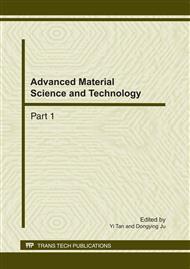p.835
p.839
p.843
p.847
p.853
p.857
p.861
p.865
p.869
Manufacturing AISI316L Components via Selective Laser Melting Coupled with Hot Isostatic Pressing
Abstract:
Selective laser melting (SLMing) is a new advanced material processing technology which is used in fabricating parts with complex shape. Hot isostatic pressing (HIPing) is a manufacture technology which forms parts by imposing high heat and pressure on metal powders or semi-manufactured parts. Considering the advantages of both the technologies, they can be combined to produce higher-quality parts free from the limitation of the shape of parts. AISI316L stainless steel is widely used in manufacturing varies of complex metal parts. In this research, three AISI316L stainless steel samples with different relative densities were acquired by controlling the fabricating parameters in SLM. The SEM and optical microscopy analysis were employed to characterize the relative density, microstructure, deformation by comparing the differences between SLM samples and SLM-HIPped samples. In addition, the influence of HIP process on microstructures of samples in different laser fabricating parameters was investigated by analyzing the mechanisms of SLM and HIP. The results show that HIP can close vacuum crack and pore, consequently, the relative density of SLM samples increases after HIP, making the property of the samples improved and microstructure better-distributed. Moreover, the increment of relative density under the same HIP condition is also discussed.
Info:
Periodical:
Pages:
853-856
Citation:
Online since:
February 2011
Authors:
Price:
Сopyright:
© 2011 Trans Tech Publications Ltd. All Rights Reserved
Share:
Citation:


